Pediatric splenomegaly is spleen enlargement in children caused by blood disorders, leading to discomfort and fullness in the spleen area.
Pediatric splenomegaly is a common complaint at this age, as it can be accompanied by blood diseases, especially in addition to liver diseases. However, not all pediatric splenomegaly indicates a medical condition, as it is possible for a child’s splenomegaly to be completely healthy and not require treatment.
What is pediatric splenomegaly?
The spleen in the human body is an organ located in the upper left quadrant of the abdomen below the rib cage. Its size increases with age, but it is usually not palpable except in certain cases, such as a thin or premature baby (born before 37 weeks of pregnancy).
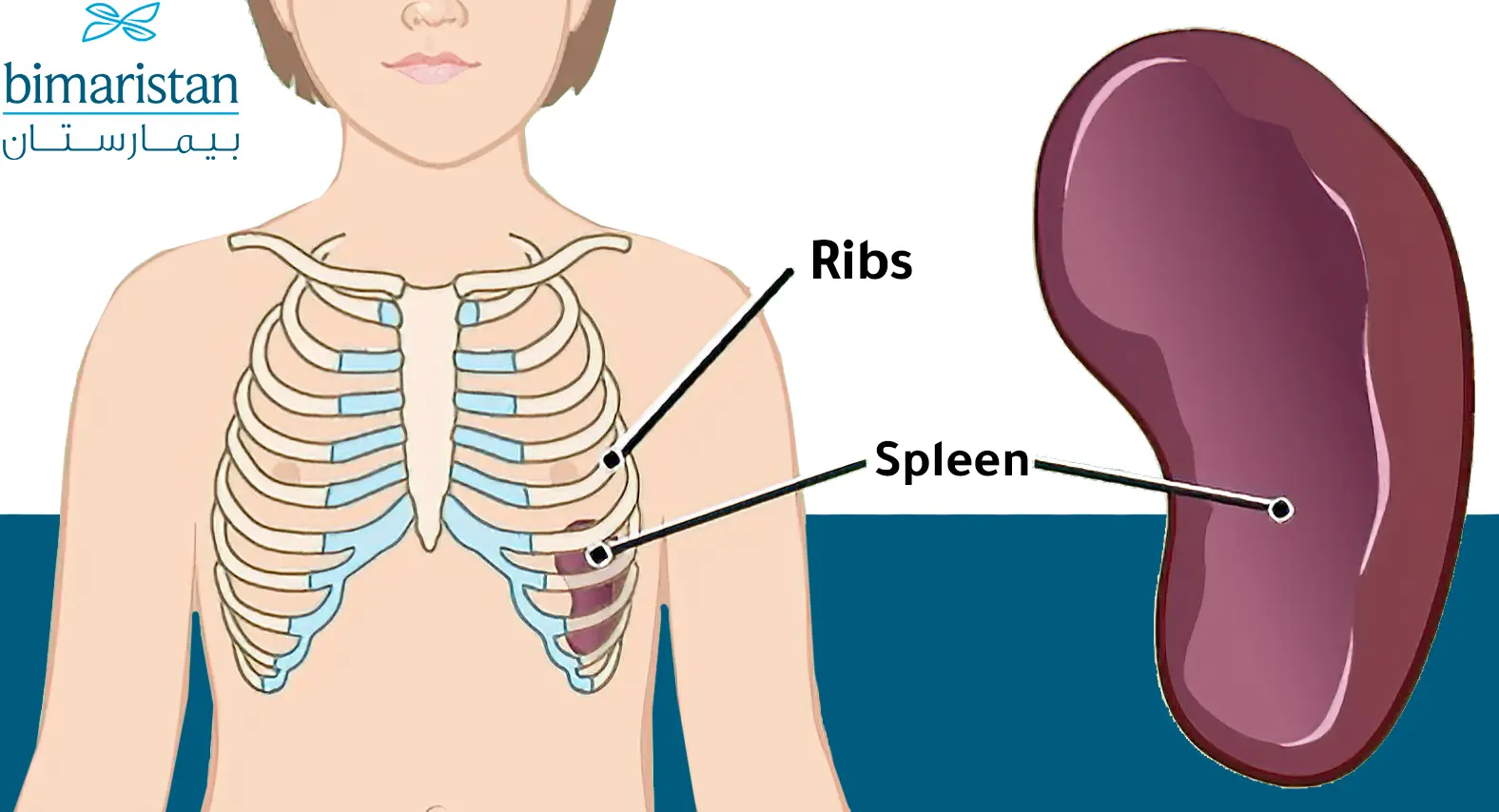
Pediatric splenomegaly, or palpating a mass in its place, and some people may call it a splenic disease in children as it is the most common disease that affects the spleen. It is one of the medical conditions that require immediate intervention by doctors to determine the cause of splenomegaly and how to treat it if certain symptoms appear in the child.
Pediatric splenomegaly symptoms
The majority of cases of pediatric splenomegaly are asymptomatic and are detected incidentally during routine clinical examination of the child. However, it is possible to manifest with one of the following symptoms and signs:
- Abdominal distension.
- Jaundice (yellowing of the skin).
- Spleen pain and crying, especially when palpated during a clinical examination.
- In cases of severe pediatric splenomegaly, it can compress the spleen’s blood vessels, affecting its blood supply and thus causing blood filtration disorders. It can also compress the stomach and cause symptoms and pain, especially after eating.
- Anemia leads to pallor because the enlarged spleen removes red blood cells significantly and does not produce enough white blood cells, which negatively affects the body’s immunity, causing more infections and diseases.
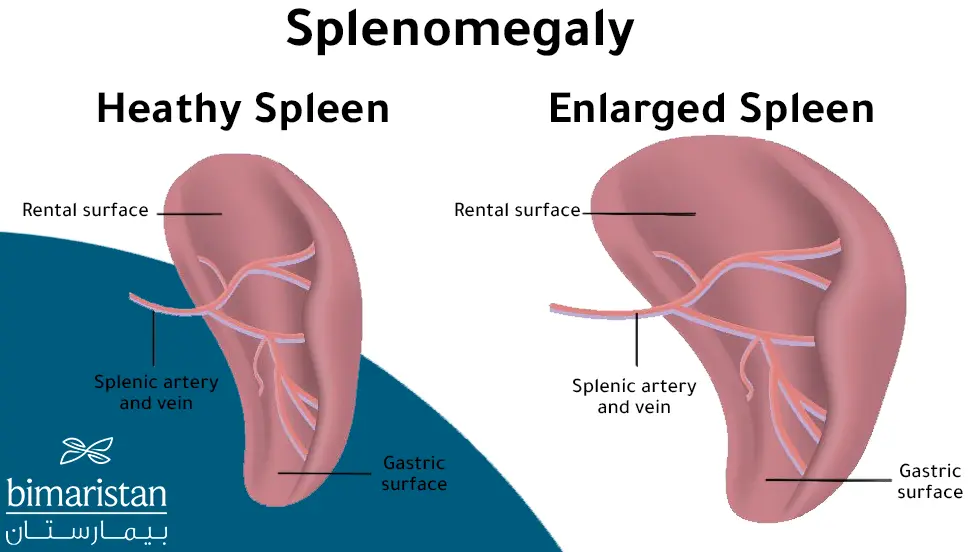
Pediatric splenomegaly causes
There are many causes or diseases that lead to pediatric splenomegaly, some of which cause temporary splenomegaly that is treatable, and some cause permanent splenomegaly. The most important causes of pediatric splenomegaly are:
Pediatric splenomegaly infectious causes
The most common infectious causes that can cause pediatric splenomegaly are bacterial infections that can lead to splenic inflammation in children and then enlargement. The most prominent of these bacteria include:
- Typhoid and paratyphoid Salmonella
- Rickettsia causing typhus
- Syphilis
- Tuberculosis: It can cause splenic enlargement in immunocompromised children and those with other diseases.
In some cases, a splenic abscess may form after bacterial infection, which causes splenomegaly in children, and compression symptoms may appear in the abdomen. Blood infection can also occur, a serious condition requiring immediate treatment.
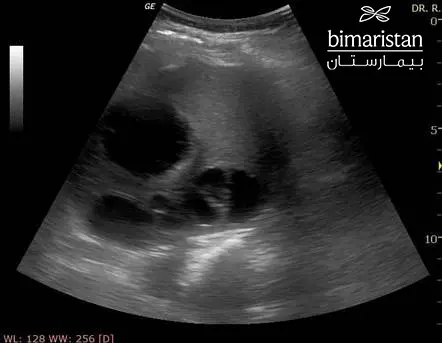
Among the viral causes, we mention infectious mononucleosis and immune thrombocytopenia virus, in addition to parasites such as blood schistosomiasis, filariasis, malaria, and echinococcus granulosus, which causes water hydatid cyst.
There are numerous blood diseases that cause pediatric splenomegaly, but the spleen may not be palpable during clinical examination. The most prominent of these diseases are:
- Acute leukemia
- Chronic leukemia
- Thalassemia
- Idiopathic thrombocytopenic purpura
- Autoimmune hemolytic anemia
- Hereditary spherocytosis
- Sickle cell anemia
- Iron deficiency anemia
Pediatric splenomegaly metabolic causes
- Gaucher’s disease is the most important metabolic disease that can cause pediatric splenomegaly.
- Amyloidosis
- Goucher’s disease
- Niemann-Pick disease
Pediatric splenomegaly circulatory causes
Any obstruction and increase in tension within the portal vein in the context of other diseases can cause pediatric 6splenomegaly. There may be an increase in tension in the portal vein if a thrombus forms in the splenic vein or if cancer forms in the pancreas.
Splenomegaly in children may occur in many hematological tumors, the most important of which are:
- Lymphoma (especially Hodgkin’s lymphoma)
- Vascular tumor
- Primary fibrous tumor
- Pure red cell aplasia (a rare type of bone cancer)
Other causes
- Still’s disease (systemic juvenile idiopathic arthritis in children)
- Non-parasitic splenic cysts
Pediatric splenomegaly diagnosis
The diagnosis of pediatric enlarged spleen is primarily based on palpating the upper left quadrant of the abdomen during clinical examination of the child, where the spleen can be palpated in infants and young children but is often pathological in older children.
In some cases, a number of laboratory tests can be used to confirm the diagnosis of splenomegaly, such as a complete blood count that shows the number of white and red blood cells in addition to platelets. Liver enzyme analysis may also be requested if there is suspicion that the cause of splenomegaly is liver disease.
In some cases, radiological methods may be used to determine the size of the enlarged spleen in children and its relationship with adjacent organs. The most prominent of these methods are:
- Ultrasound imaging (Echo): characterized by its speed compared to other radiological imaging methods.
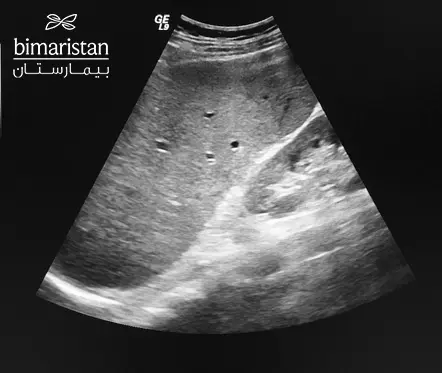
- Abdominal CT: It can accurately determine the size of the spleen and its relationship with adjacent organs.
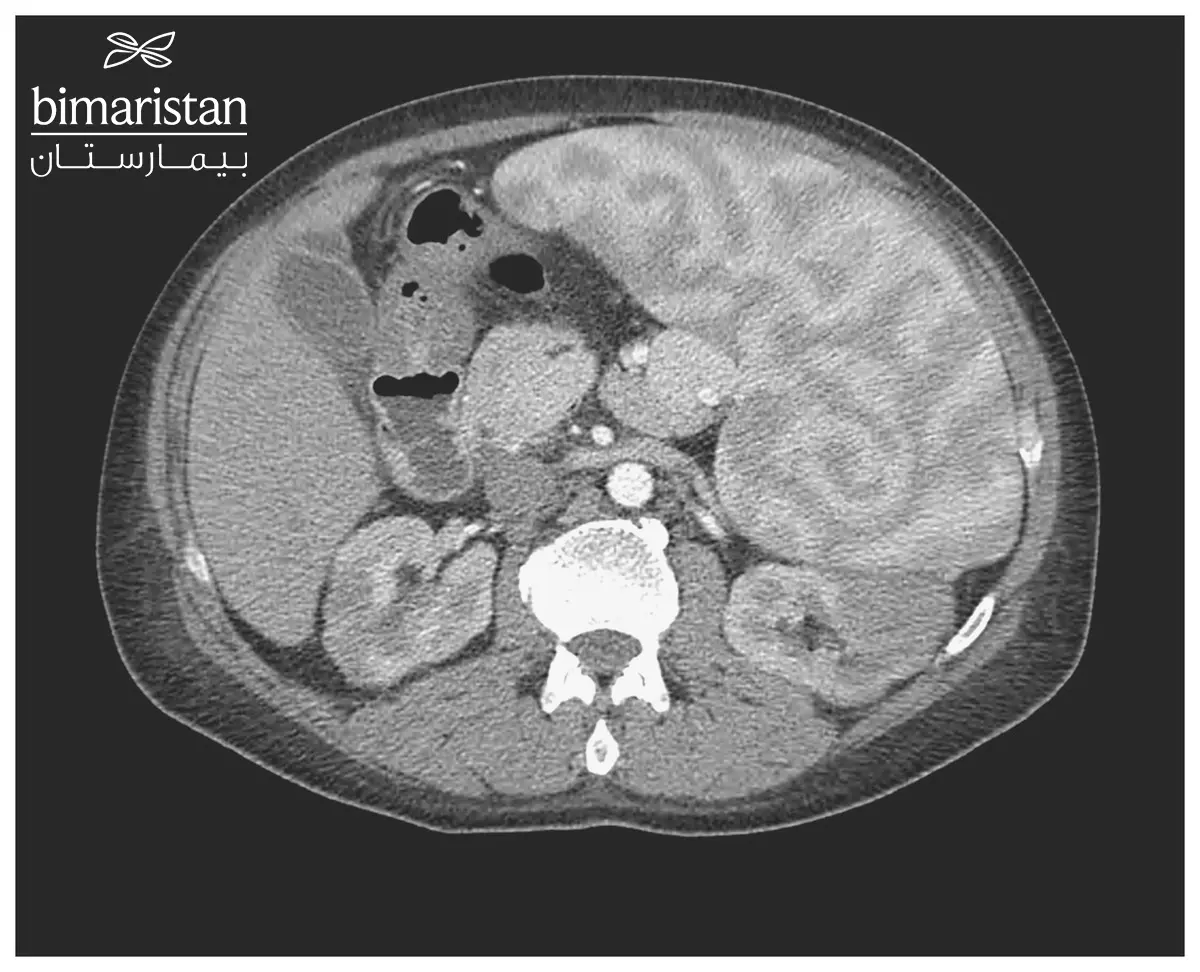
- MRI: It can track the movement and flow of blood through the organ being examined.
To determine the underlying cause of splenomegaly, a solid bone marrow biopsy or a fluid sample may be taken, or both, where both samples are taken from the hip bone under local or general anesthesia.
Taking a biopsy of the spleen with a needle has become rare due to the high risk of bleeding during this procedure. In some cases, if the cause of splenomegaly cannot be determined, the doctor may recommend removing the spleen as a diagnostic procedure to determine the true cause of enlargement.
Pediatric splenomegaly complications
If left untreated, pediatric enlarged spleen can lead to negative and life-threatening consequences. The most important complications that may occur are:
- Frequent infections
- Anemia
- Frequent bleeding
- Spleen rupture (patients with splenomegaly are more prone to rupture)
Pediatric splenomegaly Treatment
The treatment of pediatric enlarged spleen varies depending on the underlying cause of the spleen enlargement. However, we often resort to surgical intervention in which the spleen is removed from the abdomen, known as splenectomy, which has become widely performed in Turkey.
Antibiotics may suffice if the cause of spleen swelling in children is a bacterial infection. As for blood diseases such as thalassemia and sickle cell anemia, blood transfusion is of great importance in treating the disease.
Surgical treatment remains the best treatment for an enlarged spleen in cases of tumors and cancerous masses, where we often have to completely remove it to control the symptoms caused by the spleen tumor.
Finally, it should be noted that if there are no accompanying symptoms of splenomegaly in children, such as pain in the spleen or symptoms that affect the child’s normal growth, then periodic monitoring every 6-12 months may suffice for treating mild splenomegaly depending on the child’s condition and the cause of their spleen enlargement. Severe splenomegaly often requires splenectomy in Turkey.
Sources:
- VINMEC
- WebMD
- University of Chicago

